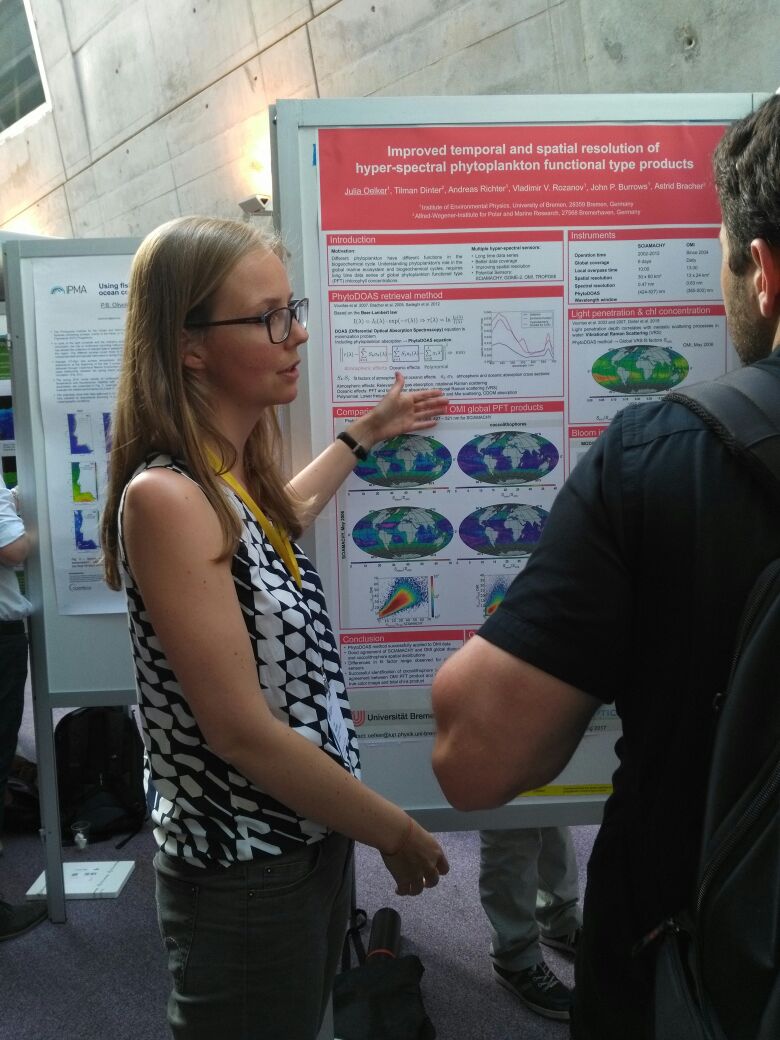Julia Oelker
Report of GLOMAR PhD student Julia Ölker about her participation in the International Ocean Colour Science Meeting 2017 (IOCS), Lisbon, Portugal from 15 to 18 May 2017
The International Ocean Color Science Meeting (IOCS) was held in Lisbon at the International Fair (FIL) at the Parque de Nações, which hosted the Expo in 1998 and is situated directly at the Tejo river. With only about 350 participants, the meeting was rather small.
I enjoy attending these smaller conferences for two reasons. First, there are not many sessions or talks in parallel, so you hardly miss anything. Second, everyone has a break at the same time making it very easy to talk to senior scientists as a PhD student.
Only in the afternoon there were three breakout sessions at the same time. Most interesting for me were the sessions on hyperspectral ocean color remote sensing and ocean color products for the Southern Ocean as they are directly linked to my PhD topic. Unfortunately, the hyperspectral session was in parallel with the session on vicarious calibration of ocean color satellite data which whould have also been very interesting for me. However, each breakout session was summarized the next day ensuring that everyone knows the key points that were discussed. I also greatly enjoyed learning about topics I was not familiar with so far like active ocean color remote sensing using lidar technology and flow cytometry as an autonomous in-situ technology.
The IOCS was the first international conference I attended. With a lot of American participants and scientists from all over the world, I found the meeting more diverse and lively than the European conferences I had attended before. The atmosphere was in general very friendly and the diversity in scientists was reflected by a great variety in research topics.
With the ice breaker, a dinner, common coffee breaks and poster sessions, the meeting was ideal for networking. I had the chance to meet a lot of senior scientists from all over the world. I appreciated talking to scientists whose published data I am using for comparison to my own data products. I found it more easy to talk to people than I had experienced at previous conferences, maybe, because I am more experienced now or because the atmosphere was more relaxed.
I am very thankful that I had the chance to attend this conference. I feel that it greatly enhanced my knowledge in the field of ocean color research and I made a big step in establishing international contacts. To anyone working in the field of ocean color remote sensing, I can highly recommend attending the International Ocean Color Science Meeting which takes place every two years. I thank the European Commission, GLOMAR and the DFG for funding.



